
61.3% of enterprises are strongly mobile-first. This article is for the other 39%

Back in the late 1990s, lots of businesses didn’t have websites. And many that did treated them as more novelty than necessity. The theory for many was, “we’ve been successful for decades without one; why do we need it now?”
Not so slowly but surely, things changed. Overwhelming customer demand and vastly improved technology put companies that didn’t have a fully functioning website at a serious disadvantage.
Nowadays, we’ve entered another era of tech transition — only this time, it’s a clear and almost overwhelming shift from desktops to mobile devices.
In our inaugural mobile-first enterprise report, enterprise executives said that customers increasingly expect more functionality out of their mobile apps. And that new technology now allows an app to replace almost every task you can do on a website, plus quite a few you can’t.
Yet nearly 40% of the enterprises surveyed in the report admitted they haven’t fully shifted to a mobile-first mindset, for reasons that range from lack of organizational change management, the need to hire experienced personnel, or even privacy concerns.
With people using more apps and spending more money on them than ever before, companies that don’t place mobile experiences at the forefront of their roadmap may find themselves behind the next digital curve.
Customers are headed to mobile
The quantitative data for our mobile-first enterprise report came from surveying 302 leaders at companies with more than 1,000 employees.
That cohort of enterprise executives said that mobile apps already play a critical role in attracting, converting, and retaining customers. And they expect that role to grow in the year ahead.
Increasing customer engagement
Most enterprise leaders said 40% or more of their customers currently engage with their company through mobile, with the goal of growing that to 60% or more.
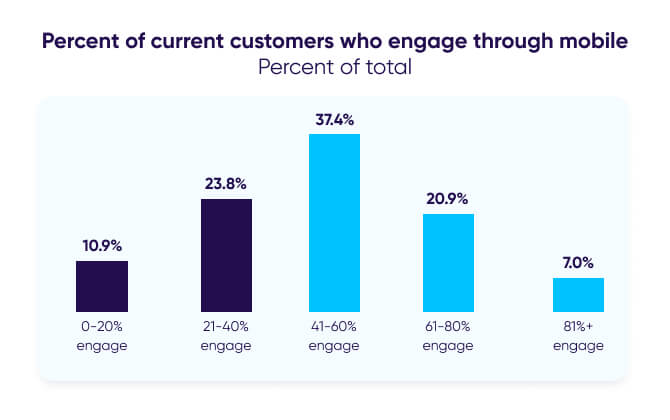
There is also a large group of people that relies entirely on mobile interactions, with every company surveyed said a significant percentage of their customers only engaged through mobile.
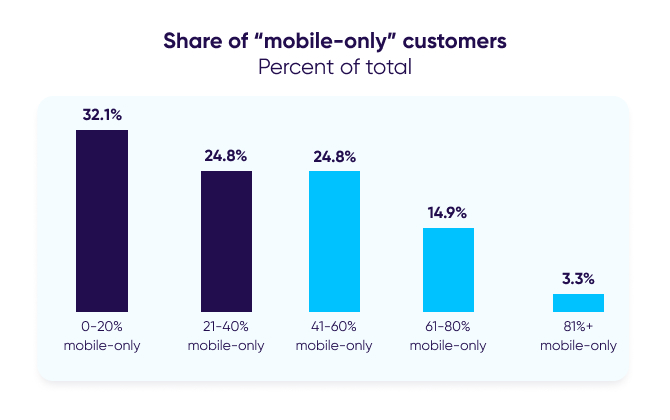
In addition to the quantitative data, we conducted eight qualitative surveys of VP-level executives. One of their replies exposed another force for the mobile migration: funding. “Our investors want to know that we are mobile-first, and we should be,” they said. “It’s a more engaged customer.”
The mobile-first enterprise report: How financial brands are transformed by mobile
Download nowGrowing beyond engagements
Mobile apps have always been a useful tool for increasing customer retention. According to enterprise leaders, apps can be as effective at getting new customers as keeping the ones you have.
Nearly 60% of those who responded said they use app outreach to acquire new customers.
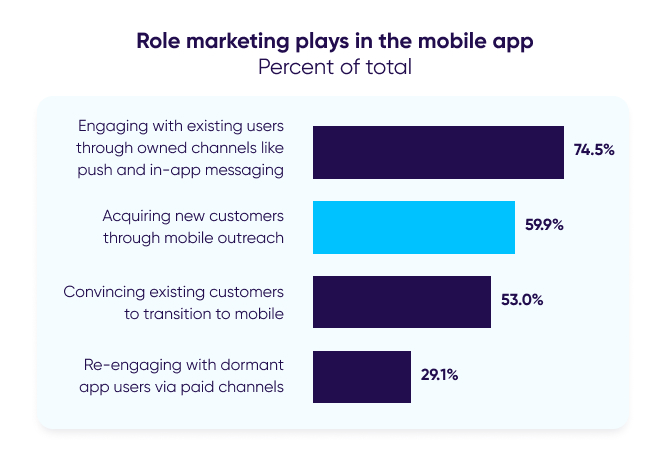
Respondents also said that customer acquisition was one of the most important roles for their mobile app. In fact, they ranked it almost as highly as brand loyalty and customer retention.
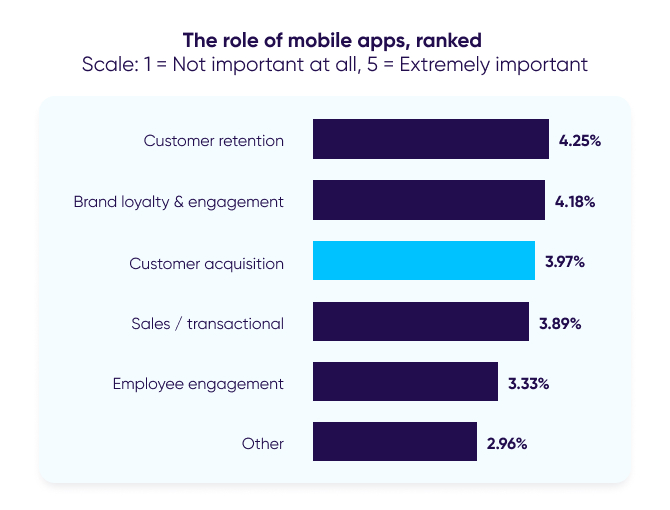
In verticals like consumer finance, having an app is a deal closer. “For banks, the mobile app is the 2nd most significant factor in choosing a bank behind fees,” explained Christopher Young, Director of Financial Services Industry Strategy for Adobe, which partnered with us to create the mobile-first enterprise report.
Apps create conversions
Apps are also proving themselves to be effective at the bottom of the sales funnel.
For example, Pizza Hut found that its most profitable customers were the ones using their app, an experience some of the VPs from our survey said they share as welle. “Our conversion is greater when users are using [the] app,” one survey respondent said.
In fact, more than three-quarters of responders say at least 25% of their company’s sales will come from mobile apps.
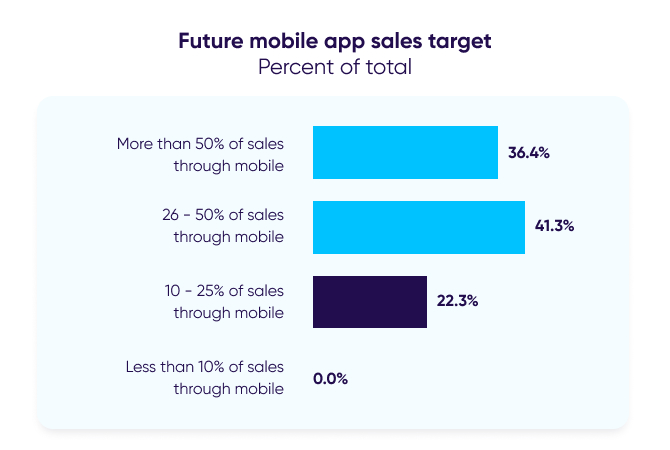
With apps helping to increase customer acquisition, retention, and conversion rates, it’s easy to see why not having one can put a company behind the curve. As one VP put it, “Mobile is the most rapidly growing business opportunity for my business.”
Mobile app tech improves business functions
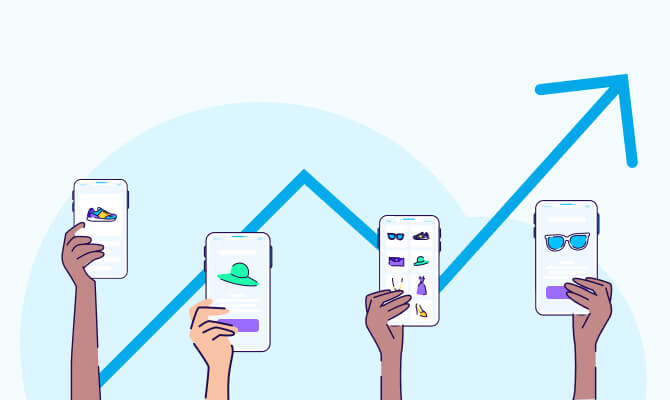
Spurred by customer needs, fueled by innovation, and accelerated by the pandemic, mobile apps have grown beyond delivering information. They’re now multi-functional tools capable of handling most aspects of every transaction.
Apps can do more than ever
In our survey, we found that mobile-first companies continue pushing the boundaries of what their apps are capable of. More than 60% of respondents say their app will be able to conduct at least 50% of all business functions, and nearly a quarter say the goal is for their app to take on all relevant functionality.
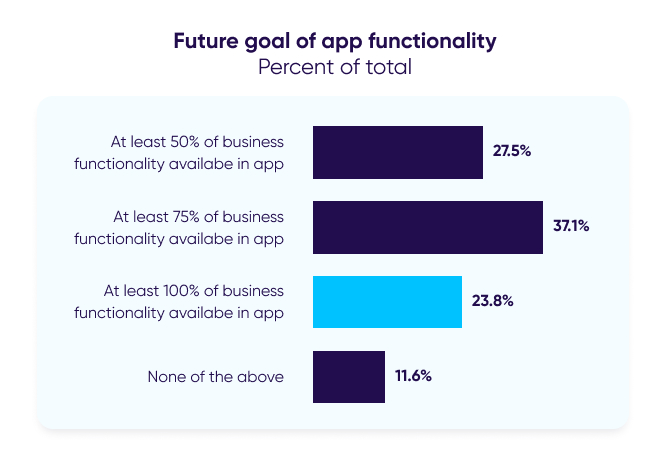
Over half of enterprise leaders in the study said that their app allowed them to improve transactional capabilities. That’s fueled in part by the advancements of UX and UI development — one area that many respondents said had improved over the last two years.
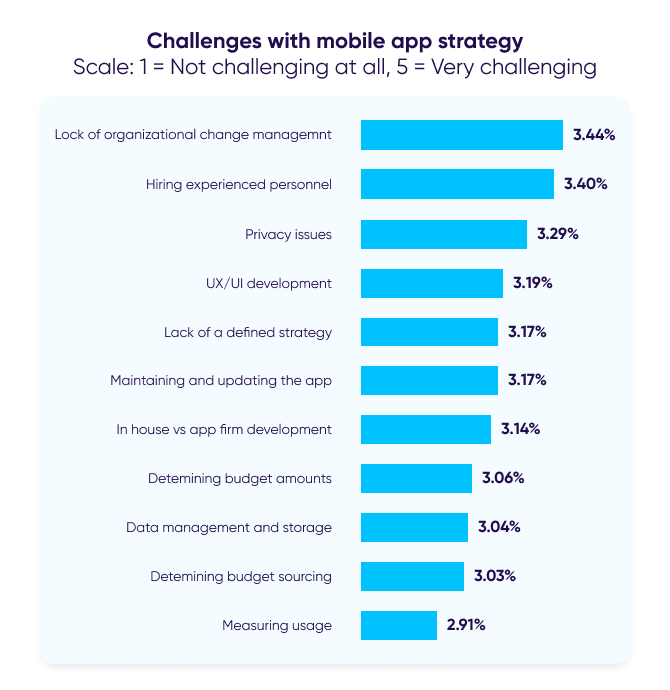
Enhanced design makes apps a more versatile tool for enterprises. And recent changes in demand have made good use of those capabilities.
The pandemic accelerated mobile app capability
Our study revealed the push-pull effect the pandemic had on mobile app development. Companies had to think of new products to deliver while customers needed new, safe ways to get tasks done.
In general, almost half of respondents said the pandemic sped up mobile transformation within their organization.
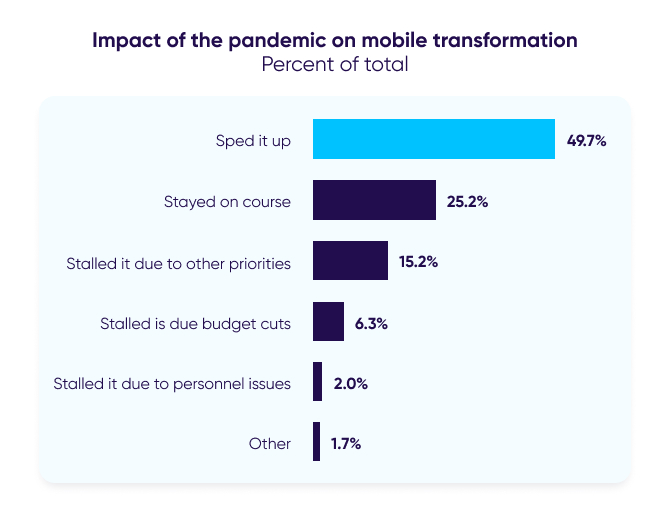
In healthcare, the emphasis was on using apps to keep frontline providers and patients safe.
“Functionality leapt forward during Covid,” said Thomas Swanson, Adobe’s Head of Industry, Strategy & Marketing – Health & Life Sciences. “A great example is United Health Care and Mercy Health using mobile apps to perform digital triage on Covid symptoms.”
While in the entertainment sector, providers had to figure out new revenue streams when people couldn’t visit in person.
“The pandemic forced a huge change in our business model that the app had to deliver on,” explained one executive. “Prior, people used it to buy tickets to live events, so we suddenly had to pivot to selling streaming content.”
It’s not clear yet exactly which capabilities will remain popular for years after the pandemic. But it’s likely that customers won’t want to give up on the convenience these developments have enabled.
Apps offer distinct advantages
Customers want more from their mobile experiences. Apps offer features that help companies deliver against those expectations.
For example, 61.4% of executives in our study said that their company’s customer experience is enhanced by mobile.
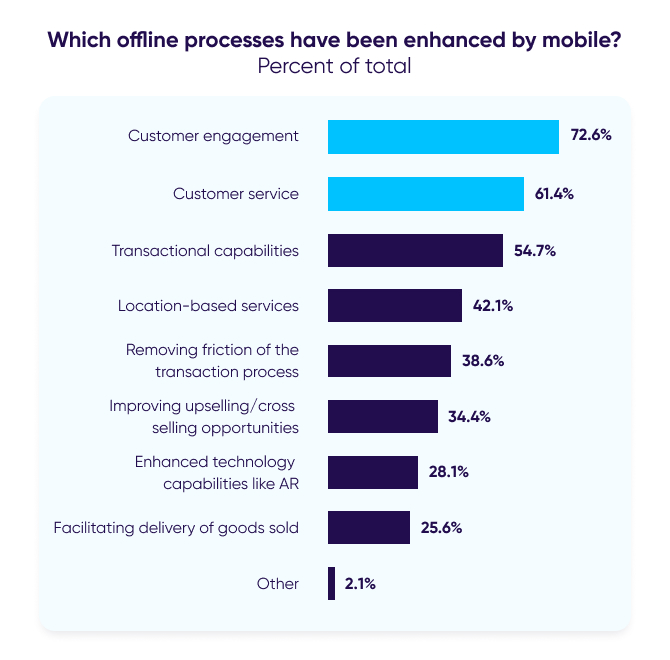
One exec noted that “customers are demanding access to info, convenience and transparency. They are empowered by apps.”
There is a wide range of features commonly used by app developers to improve customers’ experiences.
One example is augmented reality (AR), which lets customers try products virtually before they buy. AR also enables in-store mapping overlays to make finding products easier.
Additionally, mobile apps provide some security features that are hard to replicate on other channels. Biometric screening and blocking login screenshots are a couple of tools developers have to keep top of mind in order to keep users safe and build their trust.
An executive in the banking sector explained it well. “Focus on mobile increased dramatically with Covid. We have been forced to push features on mobile quickly, now that people don’t want to walk into a branch. Mobile check deposit took off. And we had to scale it. It forced us to make mobile-first even better.”
Key takeaways
The message from our inaugural mobile-first report is pretty clear: enterprise is confidently sailing toward a mobile horizon.
If your company is among the 40% that hasn’t yet made mobile interactions a top priority, here are a few points to ponder:
- The pandemic has accelerated enterprise mobile transformation.
- Mobile apps are great tools for engagement and increasingly a conduit for new customer acquisition and conversions.
- Distinct app tech advantages improve efficiency and efficacy of business functions — from customer service to conversion.
- Most enterprises see a near-term future where mobile apps can conduct 100% of their business functionality.
- The majority of large companies now consider their business to be strongly mobile-first.




